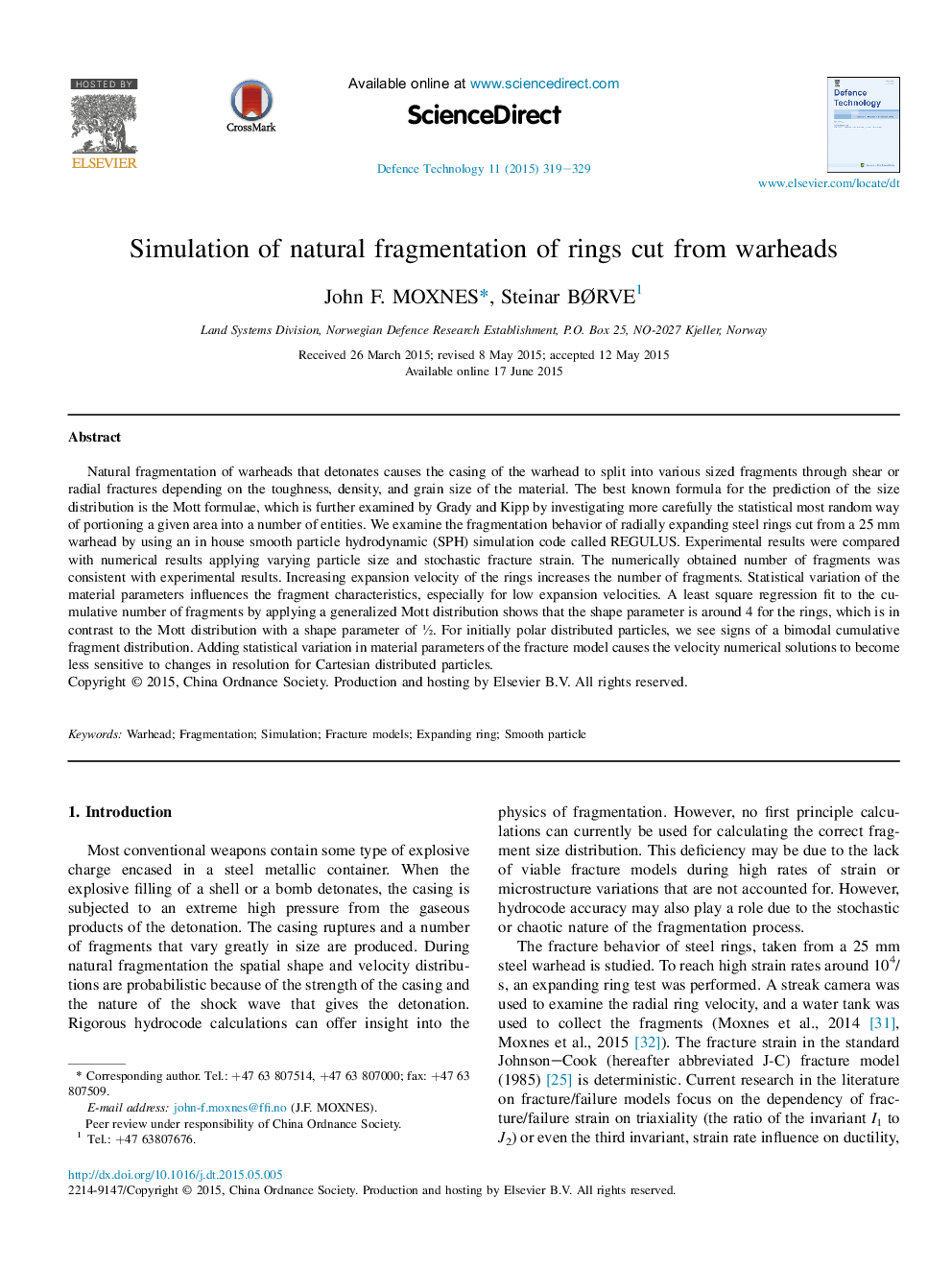| Article ID | Journal | Published Year | Pages | File Type |
|---|---|---|---|---|
| 759674 | Defence Technology | 2015 | 11 Pages |
Natural fragmentation of warheads that detonates causes the casing of the warhead to split into various sized fragments through shear or radial fractures depending on the toughness, density, and grain size of the material. The best known formula for the prediction of the size distribution is the Mott formulae, which is further examined by Grady and Kipp by investigating more carefully the statistical most random way of portioning a given area into a number of entities. We examine the fragmentation behavior of radially expanding steel rings cut from a 25 mm warhead by using an in house smooth particle hydrodynamic (SPH) simulation code called REGULUS. Experimental results were compared with numerical results applying varying particle size and stochastic fracture strain. The numerically obtained number of fragments was consistent with experimental results. Increasing expansion velocity of the rings increases the number of fragments. Statistical variation of the material parameters influences the fragment characteristics, especially for low expansion velocities. A least square regression fit to the cumulative number of fragments by applying a generalized Mott distribution shows that the shape parameter is around 4 for the rings, which is in contrast to the Mott distribution with a shape parameter of ½. For initially polar distributed particles, we see signs of a bimodal cumulative fragment distribution. Adding statistical variation in material parameters of the fracture model causes the velocity numerical solutions to become less sensitive to changes in resolution for Cartesian distributed particles.
